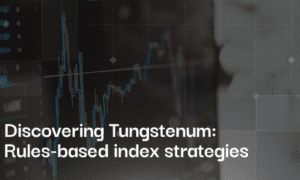Matt Cimaglia has spent more than 20 years in the creative and broadcast industries. His creative agency, Cimaglia Productions, founded in 2001, grew to include clients such as Mercedes-Benz, NBC News, Allstate Insurance and Reuters. Matt is currently the CEO and co-founder of Third Summit, where he is building a network of digital media and financial companies. Their flagship platform is Alteon, a cloud-based, A.I.-driven ecosystem for digital content creators.
Tell us about your interest and involvement with the Boca Raton Center for Arts & Innovation.
I’ve always been a strong believer and supporter of the arts and arts education. I’ve sat on boards for the MOMA and the Art Institute of Chicago, and a goal of mine has long been to bring insight from those world-class institutions to my hometown of Boca Raton, especially with a view toward how technology can help illuminate the arts and push creative boundaries. When I found out about the Boca Raton Center for Arts & Innovation, it immediately clicked.
Discuss your experience growing up in Boca Raton. How has the community changed since you were young?
When I was growing up in Boca, it had a reputation for being a somewhat sleepy town. Yet it was also dynamic in the tech industry as the home of the PC in the 1980s. IBM fostered a culture of technological advancement that brought thousands of jobs, generated lots of economic activity and put Boca on the map. After IBM moved its development plants to Texas and North Carolina in the 1990s, the staffers who remained in Boca spread out across South Florida, and Boca lost its reputation as a global tech hub. However, in the last decade alone, dozens of high rises and a growing population have contributed to Boca once again becoming a bustling city. The pandemic and swift rise of remote work have accelerated that trend, and with the help of modern technology—internet speeds and cloud platforms, for example—employees and freelancers can work from anywhere. Why not somewhere warm? It’s our job, with the Boca Raton Center for Arts & Innovation, to help bring in and foster new creative minds, entrepreneurs and locals looking for a dynamic local space to create.
You just became a member of the Board of Directors at the Boca Raton Center for Arts & Innovation, what does this mean for you? What are your duties to BRADEC and the Center?
Joining the board is an honor. I will be working with technology partners to help build a modern space, assisting with fundraising and helping overall to get development and awareness of this project off the ground. At previous boards I’ve sat on, I was part of the decision-making team that looked at what exhibits and artists to invite. One overarching goal was to target younger audiences—not just with modern forms of art, but with strategies to attract younger people to traditional art forms, such as fine arts and performance. I believe the goal of any modern art institution is to figure out ways to make art accessible to younger, more diverse audiences. How do we make a more inclusive space for the community? How do we transform this into a gathering space for everyone at all times of day? These are the questions I’m asking as we develop the Center.
One solution, and the part of the Center I’m most passionate about, is building a space for creative people to work during the day. Mizner Park, the area in downtown Boca that we’re in, is very lively at night, but struggles during the day. I want to help create a tech hub, or incubator, that can be a beacon for entrepreneurs, remote workers, artists, students and freelancers. Traditionally, arts centers only come alive at night, when performances are scheduled. Many buildings sit vacant during the day, even though the air conditioning and electricity are still running. We should focus on maximizing this space for not just individuals, but also creative brands, daytime conferences and festivals seeking to offer unique experiences for attendees. Plus, bringing in more people during the day will generate more activity for all the nearby local businesses.
Please enlighten us more on the problems the art world is facing and how the Boca Raton Center for Arts & Innovation will help to solve these issues in a creative way.
There’s a stigma around arts organizations as being elite—either too expensive, exclusive or simply confusing for people who feel like they “don’t get art.” Art is for everyone. We want families, young people, tourists and locals of all backgrounds to feel welcome to come and enjoy the space.
Part of that includes modernizing these institutions with new technologies such as AR and VR, but it’s a fine line to not make something too gimmicky that will distract from the art itself. Technology should be a tool that helps audiences discover, embrace and enjoy the art itself.
How has technology impacted the arts industry in the last decade, and what do you think would be the new trajectory?
Technology has helped the arts in many ways. Social media and rapid internet speeds worldwide have allowed millions of people to see fine art that they would never have been able to see otherwise. Not only can this be rewarding in itself, but it generates real excitement when the prospect of seeing art in-person comes up. For performances, theatre and dance shows are now frequently broadcast around the world, either via streaming platforms, television broadcasts or distribution with movie theatres. When live performances are broadcast from the Boca Raton Center for Arts & Innovation, it will not only provide a broader platform for the art itself and reach untold numbers of new audience members, but raise the global profile of the Center as well.
Additionally, art and technology are fusing together in unprecedented ways, with digital projections and multimedia environments. Cultural infrastructure around the world must catch up with this trend.
There has been a tremendous rise in the acceptance of digital art (with Beeple selling his EVERYDAYS: THE FIRST 5000 DAYS for $69,346,250), in the professional art circle, do you think Digital art will replace the traditional way of creating art?
No. Digital art is fascinating, and I’m in favour of any new artist finding ways to make a living doing what they love. But the feeling of being in a beautiful, curated space is completely different. Being able to step close to a painting, see the brushstrokes emerge from the canvas and appreciate the hours the artist invested in making every line perfect, is an entirely different experience from looking at a screen.
Do you have any available opportunities for creative minds, investors and more partners at the Center?
Absolutely. The center is seeking various types of partners who can help us fully realize our vision. In addition to philanthropic partners, we are looking for academic partners who are capable of establishing interdisciplinary research and an MIT Media Lab–type presence at the Center. We’re also seeking corporate partners with R&D or service-capability needs, who could benefit from an infusion of artistic creativity, as well as artists and creatives with a passion for imagining the future in partnership with innovators in business, technology and civic spaces.
What roadblocks have you encountered being on this project?
The biggest roadblock is people’s natural aversion to change. Many see change in a negative way, as if something is being lost. But I believe society should, and does, constantly evolve in order to progress. Younger generations have different perspectives and ideas, and new technologies will be created whether we understand them or not. It’s our job to hear those new ideas and viewpoints and work with them to build a better future.
Do you have more information to share with our readers today?
We’re confident the Center will not just help revitalize Mizner Park and Boca Raton, but also join in ushering in a creative, technological and economic wave that’s rising across the entire Gold Coast. Since the pandemic began, the region has seen a massive influx of remote workers fleeing major cities like New York, and many executives are considering relocating their headquarters here. As the world is opening up, and these remote workers and entrepreneurs realize they can move anywhere, Gold Coast leaders will have to ask themselves: What will encourage them to stay? We believe the Center will help with that by fostering creativity, innovation, economic growth and artistic expression for both longtime community members and newcomers alike.
For more information, visit: Alteon.io

































